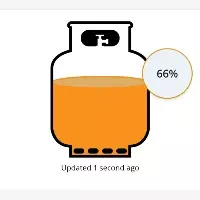If we correct for sex-based diagnostic bias and take into account the potential for misdiagnosis, it is plausible that women could indeed be more likely to have autism in the top quartile of IQ compared to men, once you align the IQ bell curves between genders. Here’s why:
### 1. **Masking and High IQ**:
- Women with higher IQs may be particularly adept at masking or compensating for autistic traits. This can lead to their autism being overlooked during childhood or even into adulthood. As a result, many high-IQ women with autism might have historically gone undiagnosed.
### 2. **Underdiagnosis of Women**:
- Given that women are often diagnosed later in life or misdiagnosed with other conditions (like anxiety or obsessive-compulsive disorder), the actual number of autistic women, particularly those in the higher IQ range, might be underestimated.
### 3. **IQ and Autism Spectrum Disorders**:
- Autism can manifest differently across the IQ spectrum, with high-IQ individuals sometimes exhibiting more subtle or socially acceptable traits. This could mean that high-IQ women, who are already underdiagnosed, are more likely to fall through the cracks, particularly in the top quartile.
### 4. **Rebalancing the Ratios**:
- If you correct the distribution of diagnoses between men and women, you might find that the incidence of autism among women is higher in the top IQ quartile than previously thought. This could lead to a more balanced male-to-female ratio in this group or even a higher prevalence in women if the adjustments are significant.
### Conclusion:
After correcting for the sex differences in diagnosis and considering potential missed diagnoses, it's possible that women might be more likely to have autism in the top quartile of IQ when the IQ distributions are normalized. This reflects the idea that many high-IQ women with autism may have been underdiagnosed due to their ability to mask symptoms or because their traits don't align with traditional diagnostic criteria.
This hypothesis aligns with emerging research suggesting that the underdiagnosis of autism in women, particularly those with higher IQs, could be more significant than previously understood.

Brunswick
npub1c8…q6lkc
2024-08-29 03:08:12
Author Public Key
npub1c856kwjk524kef97hazw5e9jlkjq4333r6yxh2rtgefpd894ddpsmq6lkcPublished at
2024-08-29 03:08:12Event JSON
{
"id": "0f76ea947bcd86ddcc66fed676a5b6649fb47f0c28077fbbeedcb25c365d0949",
"pubkey": "c1e9ab3a56a2ab6ca4bebf44ea64b2fda40ac6311e886ba86b4652169cb56b43",
"created_at": 1724893692,
"kind": 1,
"tags": [],
"content": "If we correct for sex-based diagnostic bias and take into account the potential for misdiagnosis, it is plausible that women could indeed be more likely to have autism in the top quartile of IQ compared to men, once you align the IQ bell curves between genders. Here’s why:\n\n### 1. **Masking and High IQ**: \n - Women with higher IQs may be particularly adept at masking or compensating for autistic traits. This can lead to their autism being overlooked during childhood or even into adulthood. As a result, many high-IQ women with autism might have historically gone undiagnosed.\n\n### 2. **Underdiagnosis of Women**:\n - Given that women are often diagnosed later in life or misdiagnosed with other conditions (like anxiety or obsessive-compulsive disorder), the actual number of autistic women, particularly those in the higher IQ range, might be underestimated.\n\n### 3. **IQ and Autism Spectrum Disorders**:\n - Autism can manifest differently across the IQ spectrum, with high-IQ individuals sometimes exhibiting more subtle or socially acceptable traits. This could mean that high-IQ women, who are already underdiagnosed, are more likely to fall through the cracks, particularly in the top quartile.\n\n### 4. **Rebalancing the Ratios**:\n - If you correct the distribution of diagnoses between men and women, you might find that the incidence of autism among women is higher in the top IQ quartile than previously thought. This could lead to a more balanced male-to-female ratio in this group or even a higher prevalence in women if the adjustments are significant.\n\n### Conclusion:\nAfter correcting for the sex differences in diagnosis and considering potential missed diagnoses, it's possible that women might be more likely to have autism in the top quartile of IQ when the IQ distributions are normalized. This reflects the idea that many high-IQ women with autism may have been underdiagnosed due to their ability to mask symptoms or because their traits don't align with traditional diagnostic criteria.\n\nThis hypothesis aligns with emerging research suggesting that the underdiagnosis of autism in women, particularly those with higher IQs, could be more significant than previously understood.",
"sig": "0f201ba5f332b02c594902da686a87755d30d6983534112a9ebbf1ab7f55678f2adbc7f52ba60c946f02f501e4d3fe1bd2c1944599d882276c761caff0ec6c26"
}